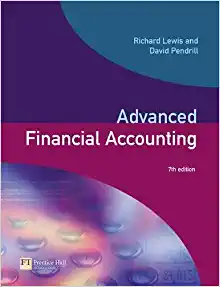Question
1. Merton Shovel Corporation has decided to bid for a contract to supply shovels to the Honduran Army. The Honduran Army intends to buy 1,000
1. Merton Shovel Corporation has decided to bid for a contract to supply shovels to the Honduran Army. The Honduran Army intends to buy 1,000 shovels per year for the next 3 years. To supply these shovels, Merton will have to acquire manufacturing equipment at a cost of $166,000. This equipment will be depreciated on a straight-line basis over its five-year lifetime. At the end of the third year, Merton can sell the equipment for exactly its book value ($66,400). Additional fixed costs will be $40,000 per year, and variable costs will be $3 per shovel. An additional investment of $23,900 in net working capital will be required when the project is initiated. This investment will be recovered at the end of the third year. Merton Shovel has a 35 percent marginal tax rate and a 17 percent required rate of return on the project. What is the lowest possible per shovel price that Merton can offer for the contract and still create value for its stockholders? (Round answer to 2 decimal places, e.g. 15.25.) Please answer the cost of the shovel price.
2. ACME Manufacturing is considering replacing an existing production line with a new line that has a greater output capacity and operates with less labor than the existing line. The new line would cost $1 million, have a five-year life, and be depreciated using MACRS over three years. At the end of five years, the new line could be sold as scrap for $1,040,000 (in year 5 dollars). Because the new line is more automated, it would require fewer operators, resulting in a savings of $79,000 per year before tax and unadjusted for inflation (in today's dollars). Additional sales with the new machine are expected to result in additional net cash inflows, before tax, of $65,000 per year (in todays dollars). If ACME invests in the new line, a one-time investment of $10,000 in additional working capital will be required. The tax rate is 35 percent, the opportunity cost of capital is 10 percent, and the annual rate of inflation is 3.50 percent. What is the NPV of the new production line? (Round intermediate calculations and final answer to the nearest whole dollar, e.g. 5,275. Enter negative amounts using either a negative sign preceding the number e.g. -45 or parentheses e.g. (45).)
3. The alternative to investing in the new production line is to overhaul the existing line, which currently has both a book value and a salvage value of $0. It would cost $ 250,000 to overhaul the existing line, but this expenditure would extend its useful life to five years. The line would have a $0 salvage value at the end of five years. The overhaul outlay would be capitalized and depreciated using MACRS over three years. The tax rate is 35 percent, the opportunity cost of capital is 9 percent. The NPV of the new production line is $ -272,000 . Should ACME replace or renovate the existing line? (Round your intermediate calculations and final answer to the nearest dollar, e.g. 5,275. Enter negative amounts using either a negative sign preceding the number e.g. -45 or parentheses e.g. (45).) Please answer the NPV of renovating old line and whether the existing line should be replaced or renovated.
Step by Step Solution
There are 3 Steps involved in it
Step: 1

Get Instant Access to Expert-Tailored Solutions
See step-by-step solutions with expert insights and AI powered tools for academic success
Step: 2

Step: 3

Ace Your Homework with AI
Get the answers you need in no time with our AI-driven, step-by-step assistance
Get Started


